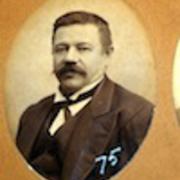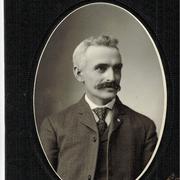
Raphael J. Guastavino
Raphael Guastavino III designed the fireproof tiles used in vaulted ceilings in the Minnesota Capitol, as well as many other structures across America. He stayed in St. Paul at The Ryan Hotel while supervising the Guastavino tile work at the Capitol. The following information is from The Basilica of St. Lawrence:
His father, Rafael Guastavino Jr., had emigrated to the United States from Barcelona in 1881. There he had been a successful architect and builder, designing large factories and homes for the industrialists of the region of Catalan. He was also credited there with being responsible for the revival of an ancient tile and mortar building system that had been used in Catalonia and other parts of Spain for centuries.
This method of building uses layers of thin tile bedded in layers of mortar to create curved horizontal surfaces. Floors, roofs, ceilings and stairs can all be formed with this system, usually in the shape of vaults or domes. Perhaps Middle Eastern in origin, this way of building creates a strong, fireproof, attractive surface. In St. Lawrence Catholic Church every horizontal surface in the building is made of this combination of tile and mortar. The building also houses the crypt of Rafael Guastavino.
By 1900 Guastavino had successfully transferred his patented tile building method to the US, and was working for the leading architects of this country. His work is now found in over a thousand buildings in this country, mainly in the Northeast, particularly in New York City and Boston. Those buildings include Grant's Tomb, the Great Hall at Ellis Island, Grand Central Station, Carnegie Hall, and the chapel at West Point. In North Carolina his work is found in the Duke Chapel in Durham, the Jefferson Standard Building in Greensboro, the Motley Memorial in Chapel Hill and St. Mary's Catholic Church in Wilmington
See also:
Guastavino: The Reinvention of Public Space in New York City
Guastavino: The Construction of a Vault
For further reading:
John Ochsendorf. Guastavino Vaulting: The Art of Structual Tile. Princeton Architectural Press; September 22, 2010.
ISBN-10: 1568987412 ISBN-13: 978-1568987415





